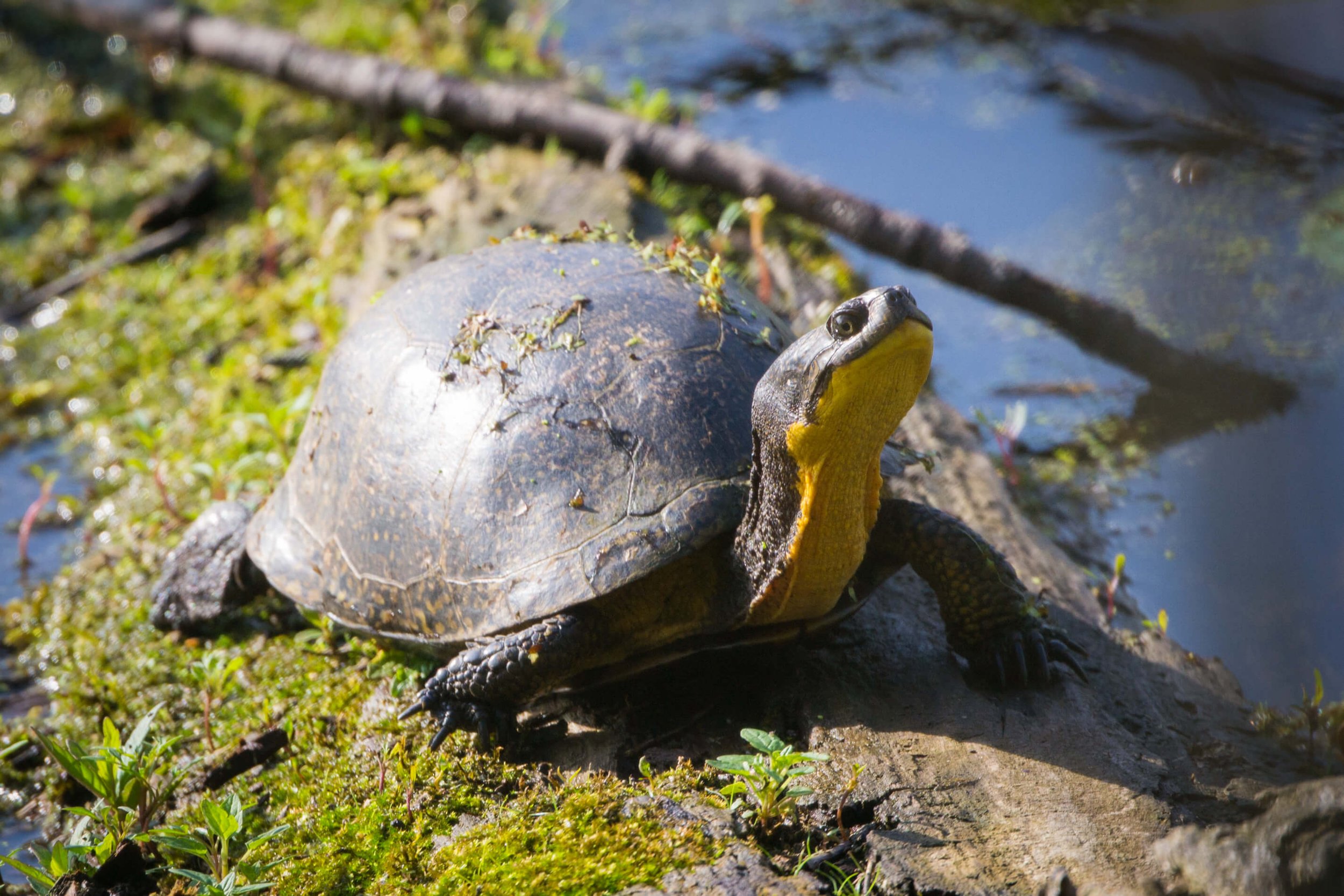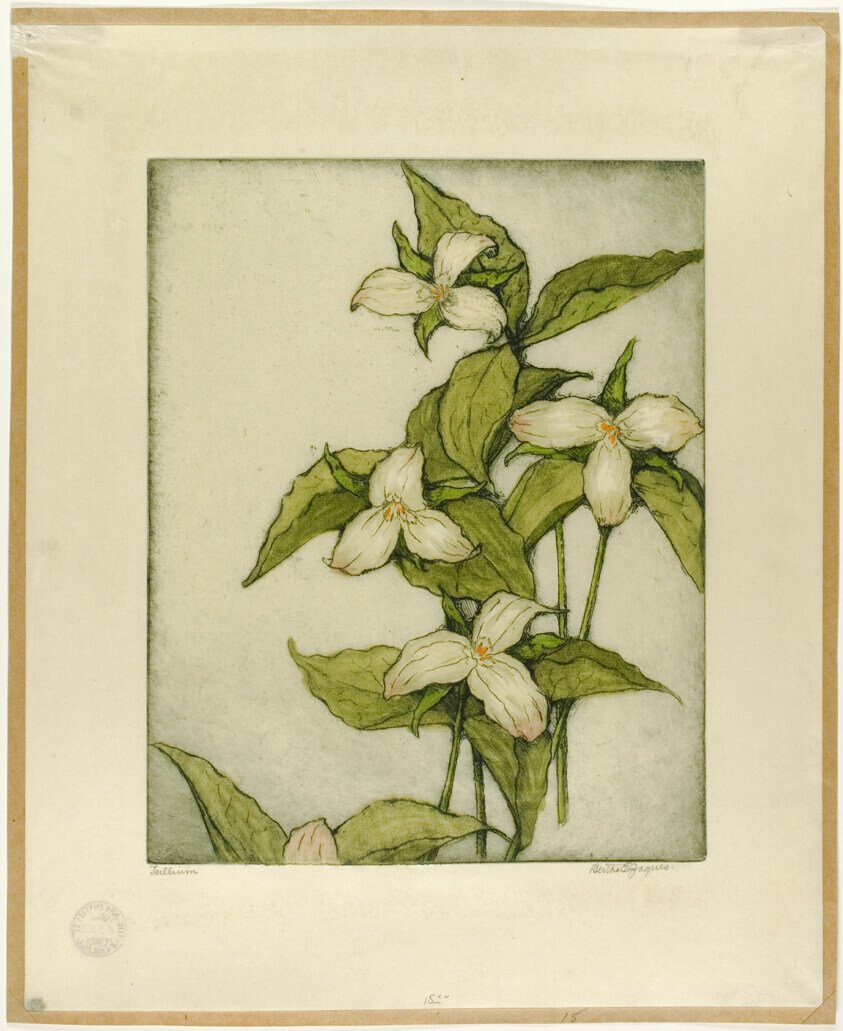The Trillium
The history of the Trillium, how it improved obstetrics, and why some animals don’t age.
Trillium recurvatum, April 19th
In 1965, J. Whitfield Gibbons, a tenderfoot academic for the University of Georgia, was conducting observations in a Michigan bog when he captured a turtle about the size and shape of a football with a black shell, yellow markings, and a bright yellow chin and throat. It was, according to his field notes, an ’old male’ Emydoidea blandingi, or Blanding’s turtle. The turtle had a passive nature, according to Gibbons, with a contemplative gaze; “big brown and yellow eyes that look right at you, unafraid yet nonthreatening”. He tagged the specimen and sent it back. 33 years later, a grayer and less agile Gibbons caught that turtle again. The turtle was doing just fine.
Blanding’s Turtles are amongst those living species that enjoy ‘negligible senescence,’ a term coined by biogerontologist Caleb Finch to denote organisms that, for unknown reasons, age, well, negligibly. Senescence is the gradual deterioration of functional characteristics in living organisms and appears to be inextricably linked, at least in animals, to the activity and production of the enzyme telomerase. A telomere, if you’re curious, is the cap that keeps DNA tidy and neat, like the plastic end of a shoelace. As cells differentiate and divide, their DNA strands fray and split. It is the job of the telomerase, like an overpriced shampoo, to protect and repair those splitting ends. Some living things seem to produce more telomerase than others, and those that do, for the most part, age slower. Other enzymatically blessed species include the three-toed box turtle, the naked mole rat, ocean quahog, rockfish and the Greenland shark. To off these vigorous beasts generally takes some untimely outside determinant: an infection, or swift impact, say. As Gibbons has put it, if his turtle hasn’t been hit by a car, it is likely to be with us still; a bit wiser but just as spry.
Plant senescence seems to be a bit more complicated, or perhaps just less enthusiastically researched. Telomerase is thought to play some part in it, but it’s not clear to what extent. Vegetation overall has a much higher tolerance to genomic instability and, put simply, they just grow differently than us; stretching ever outward from their ‘apical meristems’ (pointy bits of roots and stalks), instead of morphing organs internally. This is a critical evolutionary advantage borne from eons of coping with a sessile lifestyle and environmental stressors, but makes fleshing out the agency of senescence considerably different.
Like the Blanding’s turtle, the Trillium (seen here) is a fantastically enduring species. While most perennial garden flowers will live 3 to 15 years, Trilliums can live 50 years or more. They are often used as a model organism to examine the effects of ecological processes on age structure in herbaceous forest perennials. And if you’re wondering how one might determine the age of a woodland plant, the answer lies in counting scrapes and scars on rhizomes (although the method’s accuracy has been called into question).
All trillium species belong to the Liliaceae (lily) family and are rhizomatous herbs with unbranched stems. Morphologically, trillium plants produce no true leaves or stems above ground. The “stem” we see is what botanists call a ‘scape’, which is really just an extension of the horizontal rhizome (root) that produces tiny, scale like leaves (cataphylls). What looks like actual leaves are bracts subtending the flower. It’s seeds, like those of the Hyacinth, are spread by myrmecochory: in the mouths and on the backs of ants.
Several species of Trillium contain steroids known as sapogenins that have been used medicinally through the ages as astringents, coagulants, expectorants, and uterine stimulants. This is evidenced in their common names such as Birthwort and Indian balm. For this reason, the flower remains a sacred female herb to some—the trio of petals representing three stages of a woman’s life: “maiden, mother, and crone,” according to Karen Azoulay, in her Flowers and their Meanings. Other unrelated, but more whimsical names include Toadshade and Wakerobin.
Like Tulips, trilliums can demonstrate streaking, which distinguish them as more thrilling to behold but does nothing for their longevity. Unlike tulips, it is provoked by bacterial instead of viral infection. An organism known as phytoplasma are at the root of it (literally), the same group of microorganisms that cause walking pneumonia in humans.
A stylized version of the trillium has been the Ontario government’s official logo since 1964, when it was first created by the Progressive Conservative government of John Robarts. It was modified by the Liberal party in 2006, but was so consistently mocked and loathed by the public that it was reverted in 2019 to a more familiar but much more warmly embraced design that, like the Blanding’s turtle, still stands.
Knowledge Sources
https://nativeplantherald.prairienursery.com/2015/02/ten-things-to-know-about-trilliums/
https://en.wikipedia.org/wiki/Negligible_senescence
https://press.uchicago.edu/ucp/books/book/chicago/L/bo3684707.html
https://www.sciencedirect.com/science/article/abs/pii/S0531556500002436?via%3Dihub
https://www.fs.usda.gov/wildflowers/beauty/trilliums/about.shtml
https://kawarthanow.com/2021/05/02/10-things-you-may-not-know-about-trilliums/
https://www.allaboutgardening.com/perennial-lifespan/
https://www.thespruce.com/longest-lived-perennial-flowers-1316055
https://tryoncreek.wordpress.com/2016/03/29/trillium-the-princess-of-the-forest/
Bruce Rottink, Volunteer Nature Guide & Retired Research Forester
https://cornellbotanicgardens.org/plant/white-trillium/
http://archive-srel.uga.edu/outreach/ecoviews/ecoview130623.htm#:~:text=Barring%20untimely%20death%20from%20automobiles,turtle%2D%2D77%20years%20old!
https://www.ncbi.nlm.nih.gov/pmc/articles/PMC7912376/#:~:text=Senescence%20(from%20the%20Latin%20word,very%20widespread%20concept%20for%20plants.
https://www.ncbi.nlm.nih.gov/pmc/articles/PMC6356271/#:~:text=As%20seen%20in%20mammals%2C%20telomeres,buds%20%5B20%2C21%5D.
https://www.ncbi.nlm.nih.gov/pmc/articles/PMC9170523/#:~:text=Negligible%20or%20negative%20senescence%20occurs,with%20evolutionary%20theories%20of%20senescence.
https://www.ncbi.nlm.nih.gov/pmc/articles/PMC33381/
https://www.jstor.org/stable/1297034
https://pubmed.ncbi.nlm.nih.gov/23720427/
"13 things that don't make sense: the most intriguing scientific mysteries of our time". WorldCat. Retrieved 2014-04-12.
Azoulay, Karen. Flowers and Their Meanings: The Secret Language and History of Over 600 Blooms (A Flower Dictionary). Clarkson Potter, 2023





